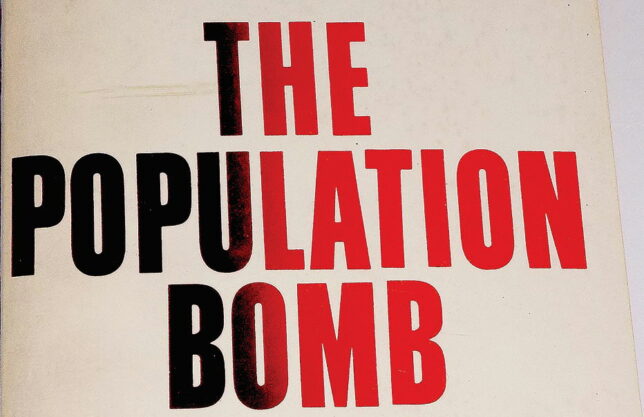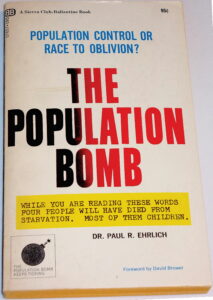Green Watch
Sustainable Development: Bad Economics


Sustainable Development, Agenda 2030, and the Great Reset (full series)
Sustainability | Origins | ESG and Social Credit Scores
Bad Economics | Maurice Strong | UN History
Bad Economics
The New Green Deal advocates would like to see net-zero carbon emissions. This imperils the economy of the world. The baby steps the Biden administration has already taken have pushed the U.S. toward recession and inflation not seen since the early 1980s. These kinds of policies will destroy the economy well before any workable transition to a carbon-free world is developed, if indeed one can be developed.
The UN notion of sustainability displays a profound misunderstanding of elementary economics. The UN’s “sustainable” development concept requires government control over the economy because it assumes that private markets will simply use resources to exhaustion—never bothering to find substitutes when resources become scarce.
This is a common misperception. A good example is the history of whaling. Whales were hunted largely for the oil used in oil lamps and for other purposes. As demand for whale oil grew, some species of whales were pushed to near extinction. Whale oil became increasingly expensive as a result. The whales were saved by the “robber baron” John D. Rockefeller, founder of Standard Oil, and those who followed him.[1] Petroleum-produced kerosine rapidly replaced whale oil as a much less expensive, safer, and more versatile substitute. Edison’s electric light later replaced kerosine.
This type of automatic market response happens over and over again, but only because the market can quickly react to shortages to find profitable alternatives. The price mechanism guarantees that as a resource becomes less plentiful, less expensive alternatives are found. Market forces also disrupt monopolies because the price mechanism motivates people to find cheaper alternatives to a monopoly-priced product. The only way monopolies last for any appreciable time is if they are protected or created by government. Yet government control of everything is the UN mantra.

The UN approach to population control is similar, accepting Dr. Paul Ehrlich’s doomsday book Population Bomb as gospel. But Ehrlich has been proven wrong over and over again. Credit: Amazon. License: https://amzn.to/3YCaBDa.
The UN approach to population control is similar, accepting Dr. Paul Ehrlich’s doomsday book Population Bomb as gospel.[2] But Ehrlich has been proven wrong over and over again. Populations adjust to differing pressures. Western nations have reduced population growth to replacement rates, and some are experiencing negative growth rates. Ironically, while it continues to advocate Ehrlich’s prophesies of doom, the UN has proposed in “Replacement Migration” for immigration to increase the populations of target countries with a shrinking workforce.[3]
The sustainable development approach also assumes that economics is a zero-sum game. If I get rich, someone else must get poorer, but wealth creation is only limited by imagination and takes nothing from anyone. The creators of Apple and Microsoft, for example, added wealth that did not exist before, creating markets all over the world that raised the income of many poor nations—and transformed the entire world in the process.
On a global scale, is it “unfair” that the U.S. consumes 20–25 percent of the world’s resources but has less than 5 percent of the world population? According to the sustainability crowd, America should cut consumption so the rest of the world can get an equitable share. Yet if the U.S. were foolish enough to follow this policy prescription, what would happen? Would other countries jump in to purchase the goods and materials we didn’t? No. The world economy would suddenly see markets for its products vanish, and the global economy would collapse overnight.
The U.S. produces about 25 percent of the world’s output. The truth is that the U.S. exchanges wealth and other resources with the rest of the world to accomplish this. Reducing U.S. GDP to 5 percent of the world’s output would represent an 80 percent contraction. For perspective, U.S. GDP declined 29 percent during the Great Depression, which pushed the world into economic catastrophe and World War II.[4] An 80 percent contraction of GDP would create a worldwide depression of unimaginable proportions.
But the Left sees this as an opportunity. Following the 2009 recession, real GDP fell 4.3 percent.[5] Then-Secretary of State John Kerry claimed that the decline in economic activity reduced greenhouse gas emissions by 6 percent. He wanted to see a 20 percent reduction, which would require a GDP decline of about 15 percent—a recession three times as bad as it was:
Let me emphasize something very strongly as we begin this discussion. The United States has already this year alone achieved a 6 percent reduction in emissions simply because of the downturn in the economy, so we are effectively saying we need to go another 14 percent.[6]
Unemployment went to 10 percent during that recession. If Kerry had his way, unemployment may have exceeded 20 percent—near Great Depression levels.
At the recent WEF Davos meeting, Kerry described what is needed to fight climate change:
Well, the lesson I’ve learned in the last year—I learned it as secretary of state and it has since been reinforced in spades, is money, money, money, money, money, money, money.[7]
An article in the Stanford Social Innovation Review states, “Estimates of how much money is needed for an energy transition away from fossil fuels over the next three decades range from $100 trillion to $150 trillion.”[8] For perspective, the entire world economy is approximately $94 trillion.[9] Meanwhile, according to Climate Action 100, if nothing is done, and global temperature increases 4°C (one estimate of many, based on the flawed models of the UN International Panel on Climate Change),[10] global economic costs will total $23 trillion by 2080.[11] Has anyone really been doing his homework?
According to the Review, which advocates eliminating the fossil-fuel industry entirely, the transition would create “massive dislocations,” including the loss of 8 million jobs in the industry by 2050 with multiples of that in downstream industries. It would also require major adjustments in how business is conducted worldwide. Most of these disruptions would of necessity be handled by government spending to provide retraining and other benefits. Some state economies—such as West Virginia, Texas, Oklahoma, Louisiana, North Dakota and others—would be “devastated” and recovery would require massive government intervention to lessen the impact.[12]
That is a best-case scenario. Spending multiples of the trillions already being spent by the U.S. on the New Green Deal and other wasteful projects with the associated inflation and debt would send the U.S. into Third-World hyperinflation and economic collapse—never mind the massive amounts of graft and corruption likely to accompany the spending.
In the next installment, Maurice Strong was probably the most influential driver behind the entire sustainability movement.
[1] Warren Meyer, “The Man Who Saved the Whales,” Forbes, November 5, 2010, https://www.forbes.com/sites/warrenmeyer/2010/11/05/the-man-who-saved-the-whales/.
[2] Paul R. Ehrlich and Ann Howland Ehrlich, Population Bomb (New York: Ballantine Books, 1968).
[3] United Nations, “New Report on Replacement Migration Issued by UN Population Division,” March 17, 2000, https://press.un.org/en/2000/20000317.dev2234.doc.html.
[4] David Wheelock, “How Bad Was the Great Depression? Gauging the Economic Impact,” St. Louis Federal Reserve Bank, July 11, 2013,
[5] Robert Rich, “The Great Recession,” Federal Reserve History, November 22, 2013, https://www.federalreservehistory.org/essays/great-recession-of-200709.
[6] Conn Carroll, “Kerry Boxer: 10 % Unemployment Is Just the Beginning,” Daily Signal, October 1, 2009, http://blog.heritage.org/2009/10/01/kerry-boxer-10-unemployment-is-just-the-beginning/.
[7] Associated Press, “Kerry on How to Keep Climate Goals Alive: ‘Money, Money, Money, Money, Money, Money, Money,’” January 17, 2023,
[8] Andrew J. Hoffman and Douglas M. Ely, “Time to Put the Fossil-Fuel Industry into Hospice,” Stanford Social Innovation Review, Fall 2022, https://ssir.org/articles/entry/time_to_put_the_fossil_fuel_industry_into_hospice.
[9] Dorothy Neufeld, “Visualizing the $94 Trillion World Economy in One Chart,” Visual Capitalist, December 22, 2021, https://www.visualcapitalist.com/visualizing-the-94-trillion-world-economy-in-one-chart/.
[10] David R. Henderson and Charles L. Hooper, “Flawed Climate Models,” Hoover Institution, April 24, 2017, https://www.hoover.org/research/flawed-climate-models.
[11] Climate Action 100, “The Business Case,” accessed January 26, 2023, https://www.climateaction100.org/business-case/.
[12] Hoffman and Ely, “Time to Put the Fossil-Fuel Industry into Hospice.”



